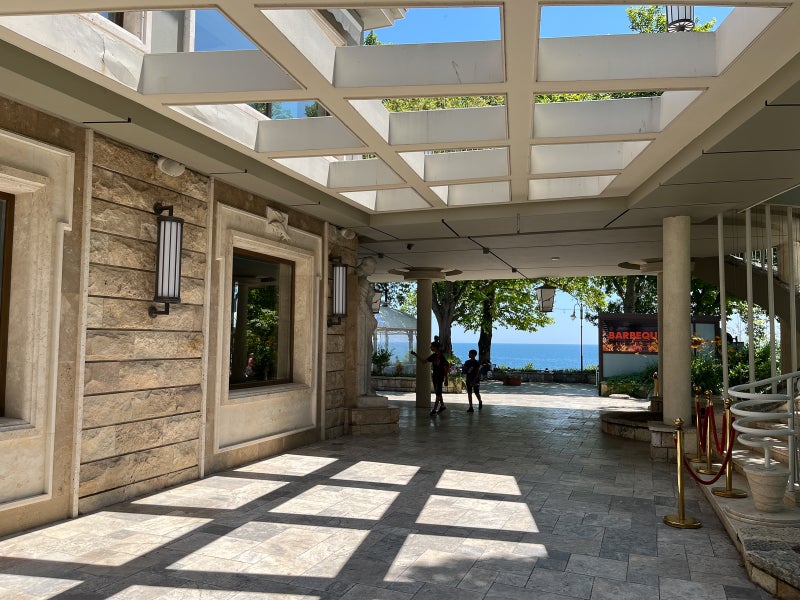Asus Zenfone 10 vs Apple iPhone 14: iPhone mini substitutes?

Intro
Ever since Apple killed the iPhone mini, there has been a gaping hole in the compact flagship smartphone niche. People who prefer iPhones and iOS in general have only two compact options: the iPhone SE lineup, which is not a real flagship, and the vanilla iPhone 14. Android fans, on the other hand, have to settle for the vanilla Galaxy most of the time. There's a new emerging force in the compact Android flagship space, and this force is called Asus.
Zenfone 10 vs iPhone 14 in a nutshell:
- Android vs iOS
- 5.9-inch up to 144Hz display on the Zenfone vs 6.1-inch 60Hz on the iPhone
- The Zenfone 10 has a bigger battery (4,300 mAh vs 3,279 mAh on the iPhone)
- Faster charging speeds on the Zenfone (30W vs 20W on the iPhone)
- The iPhone is a bit wider and heavier, while the Zenfone is thicker
- Capacitive fingerprint scanner vs 3D Face Unlock
- The Zenfone 10 has more RAM
Table of Contents:
Design and Display Quality
There's a conceptual design difference between the Zenfone 10 and the iPhone 14. The former relies on a very interesting non-glass back that has a papery feel to it and slightly protrudes from the chassis, while the latter has the same (not getting old) glass sandwich design.
Another interesting angle concerns the case situation. In our opinion, you can use the Zenfone 10 without a case; the non-glass back will survive falls and bumps, although it scratches much more easily than glass.
In the retail box of the iPhone 14, you'll find a Lightning cable and some paperwork. The situation is much more generous with the Zenfone 10. There's a 30W Hypercharge brick inside, a USB-C to USB-C cable, and a protective back cover.
When it comes to colors, both phones come in some really fresh hues. You can find detailed information below.
Apple iPhone 14 colors:
- Midnight
- Purple Starlight
- (Product) RED
- Blue
- Yellow
Asus Zenfone 10 colors:
- Midnight Black
- Starry Blue
- Comet White
- Eclipse Red
- Aurora Green
The Zenfone 10 comes with more or less the same panel as its predecessor, a 5.9-inch Samsung-made AMOLED with a peak brightness of 1,100 nits and refresh rates up to 144 Hz. The iPhone 14, on the other hand, uses a more traditional 60Hz refresh rate on its 6.1-inch OLED panel that can go a tad brighter, according to the specs, at 1,200 nits.
Display Measurements:
The Zenfone 10 relies on a capacitive fingerprint scanner mounted on the side of the phone, while the iPhone 14 comes with 3D Face Unlock. Both work flawlessly; the capacitive scanner on the Zenfone is one of the best we've ever tested, and we all know how good 3D Face Unlock is on iPhones, so no complaints here.
Performance and Software
It's always hard to compare Android and iOS devices when it comes to raw performance and synthetic benchmarks. Not only is the hardware architecture different, but the way both platforms handle apps—app optimization and management—are also different.
The Zenfone 10 comes with the latest Qualcomm has to offer, namely the Snapdragon 8 Gen 2, while the iPhone 14 features a slightly older A15 Bionic chipset (taken from the iPhone 13 Pro). The benchmark scores are quite close, but the more important thing is that both of these phones work like true flagships in real-life scenarios. You won't notice any lag or stutter, and performance shouldn't be a deciding factor when choosing between these two.
Performance Benchmarks:
The software situation is even more complicated; the Zenfone 10 comes with Android 13 out of the box and will soon get the next version, Android 14. The iPhone 14 ships with iOS 16.x, and again this fall, the phone is slated to receive the big iOS 17 update.
Camera

When it comes to the camera system, both the iPhone 14 and the Zenfone 10 come with a dual setup on the back—just a wide and ultrawide cameras with no trace of telephoto. Now, the Zenphone uses a 5MP sensor and, through pixel binning, outputs 12MP shots, while the iPhone 14 opts for a more traditional 12MP sensor with a wider aperture.
But we all know how important computational photography algorithms are nowadays, so we have to just snap some photos and comment on the results. Here we go.
Main Camera - Day
The 50MP Sony IMX766 sensor under the main lens of the Zenfone 10 has apparently received some new software algorithms because photos taken with the main camera look super vibrant, to the point that colors look a bit unnatural. This is strange because last year's model used the same sensor and produced very realistic shots. What's more, in bright daylight, the Zenfone tends to overexpose and burn some parts of the image (take a look at the orange flowers, for example).

Zenfone 10

iPhone 13/14

Zenfone 10

iPhone 13/14

Zenfone 10

iPhone 13/14

Zenfone 10

iPhone 13/14

Zenfone 10

iPhone 13/14

Zenfone 10

iPhone 13/14

Zenfone 10

iPhone 13/14

Zenfone 10

iPhone 13/14
The iPhone 14, on the other hand, does a great job at keeping colors natural, with the usual warm tonality most iPhones have. Details are good on both phones, but when it comes to exposure, the iPhone 14 produces more balanced shots that look subjectively more detailed and have a wider dynamic range.
Main Camera - Low-light
In low-light conditions the Zenfone 10 performs better, thanks to its higher resolution sensor. Photos are much more detailed and crisp, focus is good, and dynamic range is pretty decent as well. There's a strange greenish tint to the images, though, and some of them turn out too bright but overall, it's a win for the Asus.

Zenfone 10

iPhone 13/14

Zenfone 10

iPhone 13/14

Zenfone 10

iPhone 13/14

Zenfone 10

iPhone 13/14

Zenfone 10

iPhone 13/14

Zenfone 10

iPhone 13/14
The iPhone 14 struggles with its 12MP sensor, and night shots display a clear loss of detail with a soft and sometimes outright blurry quality to them. Bright lights create a halo effect and make details even harder to resolve around them.
Zoom Quality
Both the Zenfone 10 and the iPhone 14 lack a dedicated telephoto camera, and it shows. There are no winners here; the digital zoom samples look like something taken decades ago when phone cameras were low-res and tiny.
If we absolutely had to choose between the two, we'd pick the Zenfone 10, as it's doing a better job at low magnification levels. But neither of these phones is a Galaxy Ultra killer.
Portrait mode is good on both the Zenfone 10 and the iPhone 14, with the former displaying a big improvement over its predecessor. There's more color saturation again on the Zenfone 10, while the iPhone 14 keeps colors more neutral with a warmer tonality to the overall picture.
In some situations, the Zenfone 10 manages to output a wider dynamic range and more realistic photos, but it really depends on the lighting, as in some cases the Zenfone 10 underexposes the images. The bokeh is pretty convincing on both phones, and the Asus impresses in 2X Portrait mode.
Ultra-wide Camera
The ultrawide camera on the Zenfone 10 has an even wider field of view compared to its predecessor. This comes with some tradeoffs, though. There's a loss of detail toward the edges of the images, and the focus is not so good as well. Dynamic range suffers, and in general, the optical distortion algorithms aren't doing the best job here.
The iPhone 14, on the other hand, manages ultrawide shots pretty well. Not only are images more consistent when it comes to exposure and focus, but the colors are much more realistic as well. In comparison, the Zenfone 10 blows saturation through the roof, creating artifacts in the process.
Selfies
The Zenfone 10 comes with a new selfie camera, which is pretty much the only meaningful hardware upgrade in this department. The results are quite pleasing, and the phone is now on par with many other flagships and also with the iPhone 14.
Selfies are detailed, balanced, and have a good dynamic range. The only difference is that the iPhone 14 has a warmer tone and a bit brighter image overall, but both phones can shoot some really amazing pictures with their front cameras.
Video Quality
The Zenfone 10 features the same impressive 6-axis gimbal stabilization system we all know and love from its predecessor. It's a great tool if you shoot dynamic videos that involve running, biking, or pretty much anything extreme and shaky.

When it comes to the video quality itself, it's very good on both phones, and in good lighting conditions, the Zenfone 10 even pulls ahead in resolved detail. During low-light video recording, the Zenfone 10 somewhat struggled with bright objects, burning the highlights, while the iPhone 14 managed these tricky shots a bit better.
Audio Quality and Haptics
Both the Zenfone 10 and the iPhone 14 feature stereo configurations. The iPhone lineup has been notoriously good when it comes to audio representation on the main speakers, and the iPhone 14 is no exception. Despite its compact size, the audio is loud and clear, with surprisingly good bass response.
The Zenfone 10 has one advantage in the form of a 3.5mm headphone jack. Some people swear by it, and it's definitely a helpful addition but not a game changer, in our opinion. Haptics are good on both phones: short, snappy, and distinct.
Battery Life and Charging
There's a big difference in battery capacity on paper between the Zenfone 10 and the iPhone 14. The former comes with a hefty (for its size) 4,300 mAh cell, while the latter "only" manages 3,279 mAh.
Unsurprisingly, these numbers translate rather well into test results. The Zenfone 10 is one of the longest-lasting phones we've tested, with more than 27 hours of continuous browising. The Zenfone also outperforms the iPhone when it comes to video streaming, and in gaming, the results are similar, but bear in mind that the Zenfone does gaming at 144 Hz, while the iPhone can't do more than 60 Hz.
PhoneArena Battery Test Results:
Charging speeds are very similar between these two, both phones charge to 50% in around 30 minutes and take around 80–90 minutes to fully charge.
Summary and Final Verdict

So, which one should you buy, then? Even though neither of these phones is a real iPhone mini substitute, both offer a flagship experience in a very compact form factor. Their retail prices are also very similar, so the dilemma gets even more complicated.
On the other hand, the thing with iPhones is that they do offer a very smooth, and you can call it a flagship," user experience, despite missing some specs, at least on paper. One big advantage is that this flagship experience will last for five long years, while the Zenfone 10 will only get two years of major Android updates. At the end of the day, you'll be happy with either of these phones, so there's no wrong answer here.




























![iPhone users on AT&T left without service after massive outage [UPDATED]](https://m-cdn.phonearena.com/images/article/161893-wide-two_350/iPhone-users-on-AT-T-left-without-service-after-massive-outage-UPDATED.jpg)














Things that are NOT allowed: